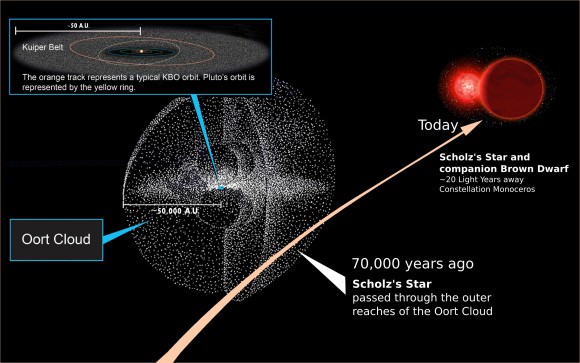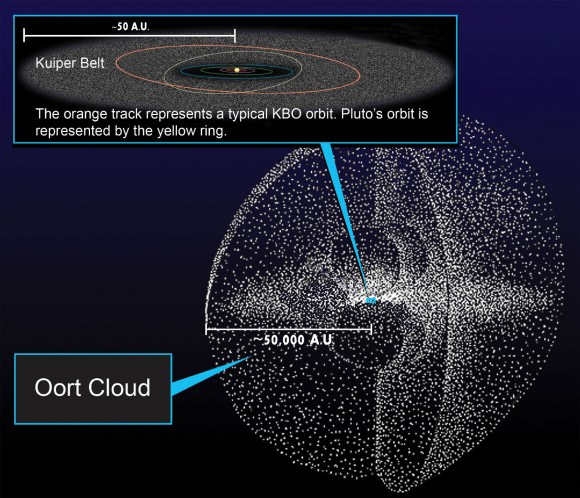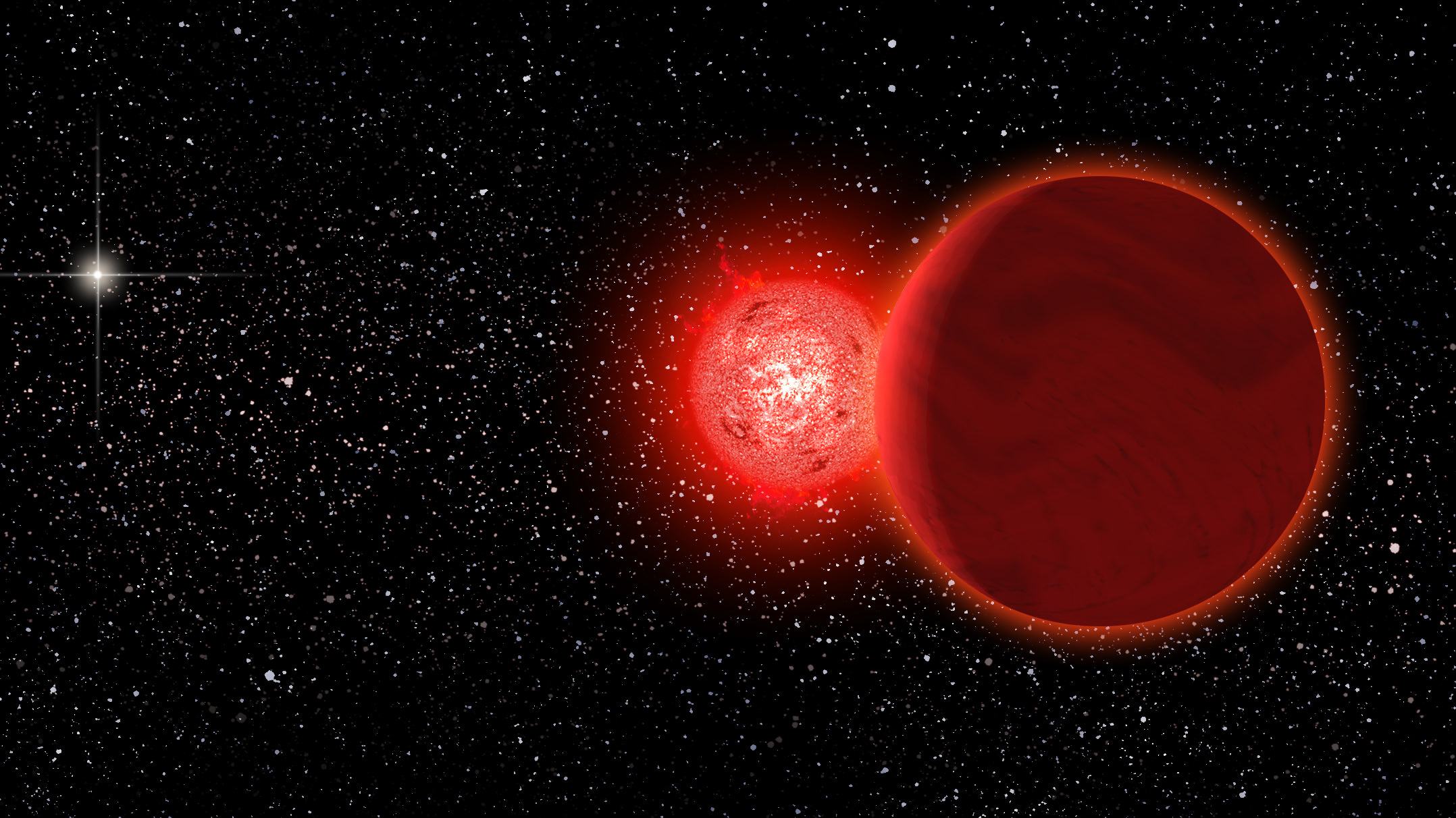Astronomers have reported the discovery of a star that passed within the outer reaches of our Solar System just 70,000 years ago, when early humans were beginning to take a foothold here on Earth. The stellar flyby was likely close enough to have influenced the orbits of comets in the outer Oort Cloud, but Neandertals and Cro Magnons – our early ancestors – were not in danger. But now astronomers are ready to look for more stars like this one.

Lead author Eric Mamajek from the University of Rochester and collaborators report in The Closest Known Flyby Of A Star To The Solar System (published in Astrophysical Journal on February 12, 2015) that “the flyby of this system likely caused negligible impact on the flux of long-period comets, the recent discovery of this binary highlights that dynamically important Oort Cloud perturbers may be lurking among nearby stars.”
The star, named Scholz’s star, was just 8/10ths of a light year at closest approach to the Sun. In comparison, the nearest known star to the Sun is Proxima Centauri at 4.2 light years.
While the internet has been rife with threads and accusations of a Nemesis star that is approaching the inner Solar System and is somehow being “hidden” by NASA, this small red dwarf star with a companion represents the real thing.
In 1984, the paleontologists David Raup and Jack Sepkoski postulated that a dim dwarf star, now widely known on the internet as the Nemesis Star, was in a very long period Solar orbit. The elliptical orbit brought the proposed star into the inner Solar System every 26 million years, causing a rain of comets and mass extinctions on that time period. By no coincidence, because of the sheer numbers of red dwarfs throughout the galaxy, Scholz’s star nearly fits such a scenario. Nemesis was proposed to be in a orbit extending 95,000 A.U. compared to Scholz’s nearest flyby distance of 50,000 A.U. Recent studies of impact rates on Earth, the Moon and Mars have discounted the existence of a Nemesis star (see New Impact Rate Count Lays Nemesis Theory to Rest, Universe Today, 8/1/2011)
But Scholz’s star — a real-life Oort Cloud perturber — was a small red dwarf star star with a M9 spectral classification. M-class stars are the most common star in our galaxy and likely the whole Universe, as 75% of all stars are of this type. Scholz’s is just 15% of the mass of our Sun. Furthermore, Scholz’s is a binary star system with the secondary being a brown dwarf of class T5. Brown Dwarfs are believed to be plentiful in the Universe but due to their very low intrinsic brightness, they are very difficult to discover … except, as in this case, as companions to brighter stars.
The astronomers reported that their survey of new astrometric data of nearby stars identified Scholz’s as an object of interest. The star’s transverse velocity was very low, that is, the stars sideways motion. Additionally, they recognized that its radial velocity – motion towards or away from us, was quite high. For Scholz’s, the star was speeding directly away from our Solar System. How close could Scholz’s star have been to our system in the past? They needed more accurate data.
The collaborators turned to two large telescopes in the southern hemisphere. Spectrographs were employed on the Southern African Large Telescope (SALT) in South Africa and the Magellan telescope at Las Campanas Observatory, Chile. With more accurate trangental and radial velocities, the researchers were able to calculate the trajectory, accounting for the Sun’s and Scholz’s motion around the Milky Way galaxy.
Scholz’s star is an active star and the researchers added that while it was nearby, it shined at a dimly of about 11th magnitude but eruptions and flares on its surface could have raised its brightness to visible levels and could have been seen as a “new” star by primitive humans of the time.

At present, Scholz’s star is 20 light years away, one of the 70 closest stars to our Solar System. However, the astronomers calculated, with a 98% certainty, that Scholz’s passed within 0.5 light years, approximately 50,000 Astronomical Units (A.U.) of the Sun.
An A.U. is the mean distance from the Earth to the Sun and 50,000 is an important mile marker in our Solar System. It is the outer reaches of the Oort Cloud where billions of comets reside in cold storage, in orbits that take hundreds of thousands of years to circle the Sun.
With this first extraordinary close encounter discovered, the collaborators of this paper as well as other researchers are planning new searches for “Nemesis” type stars. The Large Synoptic Survey Telescope (LSST) and other telescopes within the next decade will bring an incredible array of data sets that will uncover many more red dwarf, brown dwarf and possibly orphan planets roaming in nearby space. Some of these could likewise be traced to past or future near misses to the Sun and Earth system.

